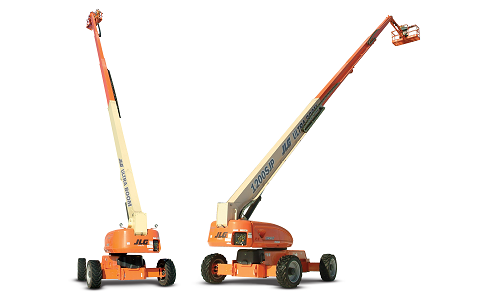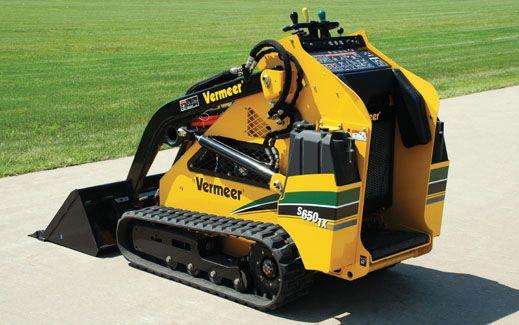Equipment Rental Company: Your Resource for All Kinds Of Machinery
Equipment Rental Company: Your Resource for All Kinds Of Machinery
Blog Article
Optimize Your Spending Plan by Recognizing the Expenses Associated With Building And Construction Tools Rentals
Comprehending the full range of costs connected with building equipment rentals is vital for optimizing your budget plan. What methods can be used to properly handle these costs and ensure a more effective rental experience?
Overview of Rental Expenses
When taking into consideration building and construction equipment leasings, comprehending the associated prices is paramount for effective budgeting and task preparation. Rental prices can vary substantially based on numerous aspects, consisting of devices kind, duration of service, and area. The first rental fee commonly reflects the tools's market demand and its associated operational abilities, influencing the overall expenditure.
In addition to the base rental price, ancillary costs might occur, such as transportation charges, gas surcharges, and upkeep costs. It is necessary to make up these additional expenditures to accurately evaluate the total expense of renting out equipment. The rental period can impact pricing; longer leasings might certify for affordable prices, while short-term leasings might incur greater day-to-day charges.

Breakdown of Rental Rates
An extensive understanding of rental prices is vital for specialists and job managers aiming to maximize their spending plans. Rental rates for construction equipment usually are composed of several components, including base rates, time-based charges, and use costs.
Base rates are the core costs related to the leasing of the tools, frequently established by the type and dimension of the equipment. These rates can vary considerably, influenced by factors such as devices demand, availability, and local market trends. Time-based costs, which might be daily, weekly, or monthly, serve to accommodate various job timelines and rental durations.
In addition, rental prices might consist of usage fees, which are applicable when tools is utilized beyond a specified limit, making certain that the rental company can represent damage. Seasonal need fluctuations can additionally affect rental prices, with peak building seasons typically commanding greater prices.
Furthermore, comprehending the rental business's policies relating to upkeep and insurance policy can offer more understanding into the total expense structure. By assessing these parts, service providers can make educated decisions, ensuring the choice of rental tools straightens with both project needs and spending plan constraints.
Additional Costs to Think About
Recognizing the ins and outs of extra costs is critical for service providers to manage their general rental costs efficiently. Past the standard rental image source prices, numerous auxiliary charges can dramatically impact the complete expense of equipment leasing. These charges usually consist of delivery and pick-up costs, which can differ based on range and logistics included in carrying the devices to and from the work website.
Moreover, some rental firms might impose gas additional charges if the tools is returned with much less gas than when rented out. It is also vital to know possible cleansing fees, particularly for specific devices that calls for comprehensive upkeep after use.

Extensively assessing the rental agreement and clearing up these extra fees ahead of time can assist service providers stay clear of unanticipated prices and ensure that budget plans visit this site right here continue to be undamaged throughout the task lifecycle.
Repair And Maintenance Expenses
Normal repair and maintenance expenditures are usually forgotten aspects that can significantly affect the overall price of building tools services. When renting out tools, it is crucial to consider not just the rental fees yet also the possible prices connected with maintaining the equipment in ideal operating condition.
Many rental firms include fundamental upkeep as component of the rental contract; however, more unanticipated failures or substantial repair work can lead to extra expenses. It's necessary to examine the rental contract meticulously to understand what maintenance services are covered and what obligations drop on the tenant.
In addition, tools that is not well-maintained can result in ineffectiveness on duty site, possibly causing delays and boosting project prices. To minimize these dangers, it is suggested to conduct regular examinations and keep open interaction with the rental copyright relating to any type of concerns that emerge during use.
Insurance Coverage and Obligation Costs
Insurance coverage and responsibility prices are crucial components that can dramatically impact the total expense of building equipment services (equipment rental company). These expenses guarantee that both the rental business and the client are protected from potential financial losses arising from crashes, damage, or burglary throughout the rental period

In addition, clients need to know any kind of deductibles or exclusions in the insurance coverage, as these can affect potential out-of-pocket costs. Comprehending the conditions of any type of insurance policy protection is important to avoid unforeseen prices. Eventually, budgeting for insurance and liability costs can help guarantee a smoother rental experience and safeguard versus financial threats linked with building tasks.
Conclusion
In conclusion, a detailed understanding of the costs associated with building equipment rentals is vital for efficient budget management. Eventually, notified decision-making concerning equipment leasings contributes to the overall success of building endeavors.
Rental prices can differ dramatically based on several aspects, including tools type, duration of leasing, and location (dozer rental). The rental duration can affect pricing; longer leasings might qualify for reduced prices, while temporary services might sustain higher everyday fees
By conducting thorough research study and involving with credible rental companies, professionals can properly navigate the complexities of rental rates, ultimately maximizing their monetary resources.
Past the conventional rental prices, various supplementary fees can dramatically impact the overall price of equipment rental. Rental business usually offer obligation insurance policy that covers injuries to third celebrations or damages to residential or commercial property, while devices damages insurance policy can cover the price of repairs or replacement if the leased devices is damaged.
Report this page